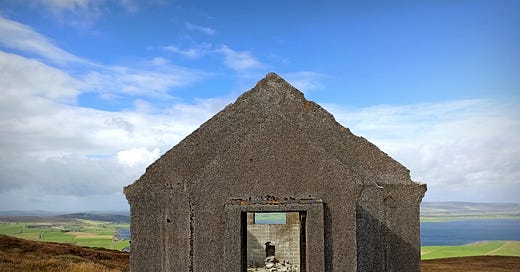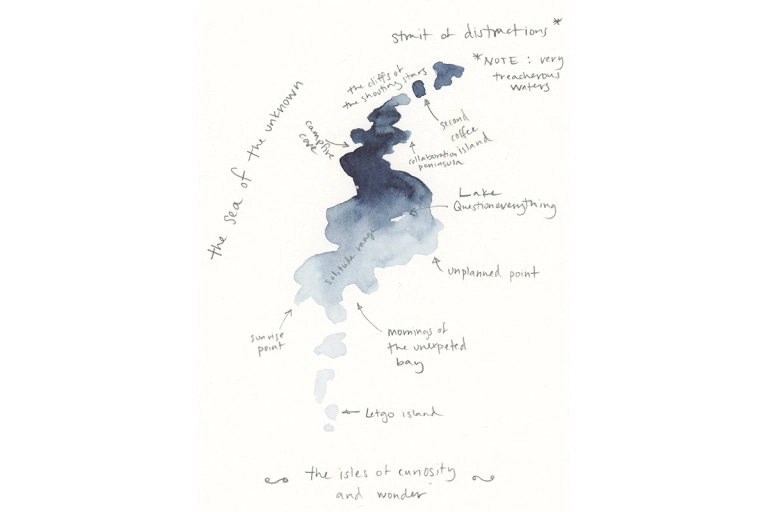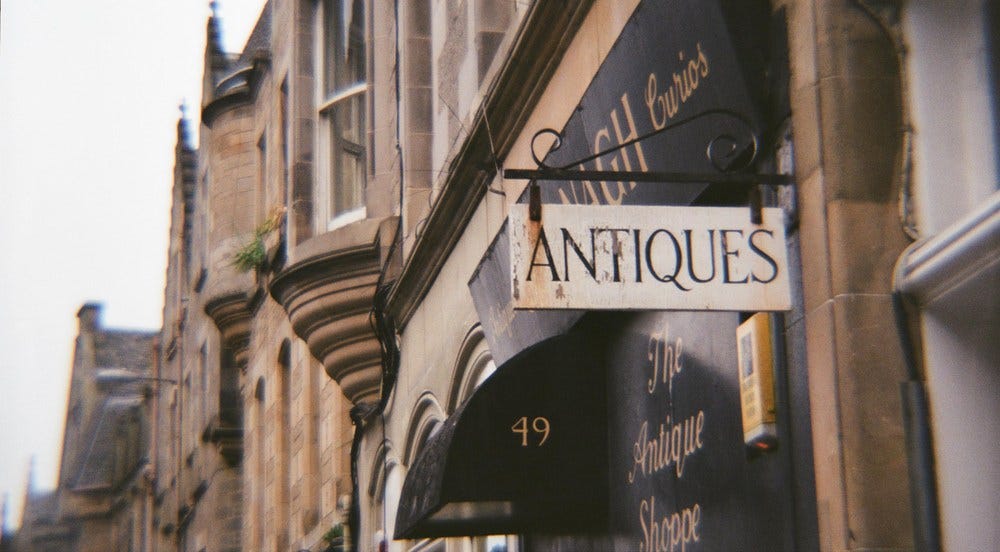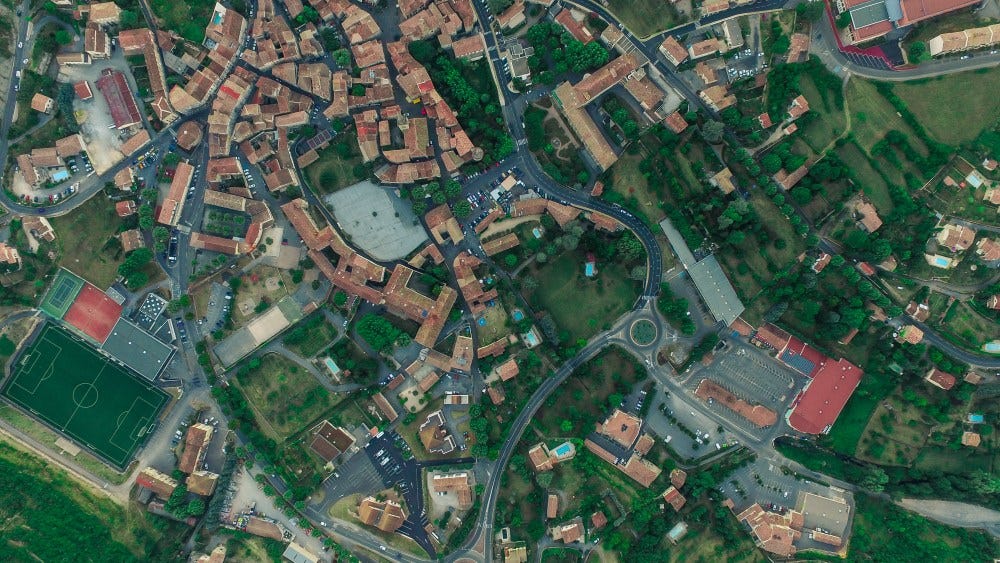Hello again!
Welcome to another handful of Everything Is Amazing challenges - as explained in more detail here.
They work in the following way:
You pick one (or more) of these challenges and take a crack at it/them over the coming week.
If you complete any, you will enjoy the unusual phenomenon of Having Done An Odd Thing For Reasons That May Only Become Clear Later. I explain why that’s a surprisingly good thing here.
Still haven’t had a go at anything? Marvellous! That means you have the entire first season of ‘em to pick from, plus these new ones. Shedloads, that is.
And since the UK is slowly unlocking right now, these five new challenges are a little more outgoing than previously, and I’ve included a non-lockdown challenge, just in case you have the freedom to get out and about wherever you are in the world. (If not, please ignore for now.)
Whatever you decide to do, nail your colours to the mast. Leave a comment by clicking the button below, explaining what you’re doing this week and why:
This week’s challenges are as follows:
1) Find Your Nearest Ruin
When I was a teen living on the east coast of England, there was a ruined building just up the road, filled with dead people.
No, really. I was convinced of it. Behind a once-huge crumbling farmhouse now overgrown with nettles and brambles that savaged the legs of anyone idiotic enough go exploring wearing badminton shorts (hi), there was a wartime pillbox, mirroring the one at the other side of town near the deserted village. It was concreted shut, but you could shine a torch through the embrasures and see it was filled with water. Then the not-so-good smell would hit you at the exact same moment you saw…things, bobbing around. Bodies, obviously! Let’s forget logic, or the basic rules of decomposition. They were bodies. Fight me on this if you must.
Most ruins aren’t so dramatic - but they certainly are poignant, evocative and filled with reminders about how forgiving, resilient and filled with non-human purpose the natural world is. If you read it, this absolutely stunning book will make abandoned places irresistible to you for years to come. You don’t have to read it to do this challenge, but it’ll certainly help.
Here, then, is your task:
1) Find your nearest ruin - a building formerly occupied by human beings, now by birds and other adventurous wildlife.
2) Then find that ruin’s name.
I mean, it wasn’t always called “The Ruin”. For example, that wreck of a place around the corner from my East Yorkshire home was called Trinity House (which is why, when it was razed a few years later and turned into a housing development, the street that replaced it is called Trinity Road, and the surrounding area the Trinity Fields residential estate). Knowing that name makes me want to learn more. Why “Trinity”? Who lived there? Who owned it when it was in ruins? And so on.
Find it. Learn its name. And then see if you want to dig deeper. That’s your job here.
2) Create A To-Do Map
A huge chunk of the internet exists just to squabble over the question “What’s the best way to create a To-Do List?” And now it’s time to fight back.
Not against the people squabbling, obviously. You can’t win against them. There’s too many of them, they’ve got, like, facts and stuff, and they spend all day arguing so they’re really damn good at it.
No. This is about finding a gentler, more fun way of getting control of that list of things you want to do with your week.
I hate To Do lists, and I write them all the time. There’s no contradiction there. Stuff has to get organised in advance, or it won’t get done. And what better way except a kind of aspirational shopping-list of future triumphs presented in a dull, mechanical format? And hey, what worse way?
So nuts to that approach. Let’s get things done AND have some fun, by staying with this season’s theme of fake maps.
You’re going to take the things you want to do, and you’re going to turn them into an imaginary map, in the style of Anna Brones and Paula Flach (and a dash of the Golden Age of Piracy).
How exactly you do this is up to you. You could make every day its own island - or assemble them by topic (Tedious Chores Island, Morning Routine Inside Passage etc.) What would be most fun? Let your imagination sail in all directions.
The main thing here is to make this week’s Pile O’Stuff to feel like something fresh and new. To fall in love with the idea of it. (When was the last time that happened with a To-Do List? Ayup.) To maybe feel like it’s a kind of adventure! A proper adventure, filled with moments of self-doubt, peril and misery as well as victory over adversity!
If you map it, it’ll feel much more real (and you’ll get more curious about what you could get done).
There be treasure there, me hearties. Go plunder it. Arr.
3) Look Upwards
In the ninth essay in her book Findings, Kathleen Jamie, walking through an elegant part of Edinburgh, looks up and sees a comet:
“I can’t recall what I was doing there, having no business with lawyers or insurance companies, but from [Charlotte Square]’s wide pavements I happened to look up and, between chimney stacks and cupolas, saw this beautiful brass comet, a shining ball towing a deeply forked tail.”
This sparks her curiosity about what else she’s missed:
“If I said I knew Edinburgh, I meant its cthonic parts, the wynds and stairs that deliver you quickly to where you’re going. Before the comet, I’d never wondered what the city raises upwards: what its domes and spires offer to the winds….
So the comet got me wondering and, one bright and windless day when the weather had passed, I took myself up Calton Hill to see what else I’d missed.”
What follows is one of my favourite pieces of curiosity-driven writing, and a revelation if you live in Edinburgh. I’m going to spoil exactly none of it, in the hope that you go read Findings and allow it to work its generous, electrifying magic upon you. (Incredible book.)
So. How often do we look upwards as we walk? Whatever the average is, it’s diminishing thanks to “text neck,” the downward pull of our gaze towards our phones and all the cervical and shoulder disorders that result. Downwards is also where nearby objects are, so our eyes stay focused on what’s in front of us, increasing the risk of asthenopia (eye-strain). Looking up usually means looking further, relaxing our eyes and resetting our neck posture - and if it’s brighter up there or the breeze gets to your face, you’re more likely to blink, which is a good thing in the long run.
Plus, it’s just fun. What haven’t you noticed as you walk your usual walk to work every day, or walk the dog, or pop to the shops for groceries? What was there all along and you never knew, because you never lifted your head to see it?
This week is posture correction week. You’re going to aim for a more level gaze, fighting the urge to bend your head, and occasionally stopping to crane your neck back and see what’s overhead. You’re going to do this in all the places you already think you know - and maybe, just maybe, you’re going to get a glimpse of a new town or city hidden right over your head.
Eyes sharp.
4) Uncover The Story Of A Treasured Thing
If you’re not British, the name Antiques Roadshow might not mean much to you.
Or…hm, wait, maybe it will: I just checked, and it seems that Australia, Belgium, Canada, Germany, Finland, Sweden, the Netherlands and the United States have their own versions now. Well, there goes my intro.
Okay. So maybe you’re aware of how every Sunday night (is it still on Sundays, outside of the UK?), families gather round the telly to watch some really lovely people discover they’re the unwitting owners of a masterpiece worth millions, or some really obnoxious idiots realise their prized possession they’re bragging about so pompously is, in fact, a worthless piece of shit. It’s a delight for all ages.
Well, that’s what brings viewers in. But what keeps them there are the stories, expertly and flamboyantly spun by the show’s specialists:
“…oh, this is exactly the kind of thing I love to see - and I thought I never would again. But here it is. What a treat. This, I feel fairly confident in saying, is now the last of its kind…”
“…and presumably that sea voyage, which is hard to imagine these days, it must have been in appalling conditions, absolutely frightful - well, we can only speculate that the sailor who smuggled it to Europe in his belongings, and it has to be a sailor of course, because look at these markings…”
“…so let me ask you, this duck has been on Lake Windermere for the best part of a hundred years or more, is that right?”
This historical detective-work is what attracted me to Archaeology. While studying it at Uni, I found myself in the first of two camps: the worshippers of Stories & Ideas, as opposed to the worshippers of Things & Stuff.
(This is a disgraceful oversimplification, of course: there were the worshippers of Cider, the worshippers of Dead Things & That Special Freezer You Buy To Keep Them In, and so on. Archaeology students defy simple labelling and are impossible to pin down, especially the week before a seminar when you’re bloody well supposed to be doing a joint-presentation with them*.)
For story-lovers, the history of treasured things - that’s not “treasure,” but stuff that has emotional and informational value - has endless appeal. I’ve wondered for years why nobody was doing a regular column on it somewhere prominent. In fact, someone was. She’s called Monica, and she was doing it at the much-missed Hairpin. (Ah, alas. Sniffle.)
But then I learned she moved it into a Substack newsletter called Dearest. Hooray! (Extra points awarded for her introduction to new readers: “I’m an enthusiastic dingus.”)
So, your turn. Take inspiration from Monica’s archives and wander around your own home in search of an interesting object that looks like it might have a story (or ask to explore an elderly relative’s home, if you’ve been hitting IKEA a bit too hard in recent years).
Choose a thing, and spend a week researching it, from the absolute basics of a Google Image Search to hunting down an enthusiast or two and giving them a call.
Imagine you’re an expert on Antiques Roadshow or Time Team, and that at the end of the week you’ll have to give a five-minute summary to the cameras of everything you’ve learned. Imagine you’ll need to be entertaining, or else you won’t be asked back for the next episode - but also factual, for exactly the same reason.
One week. The best story you can find. Go.
*Moi aussi, j’accuse. Two weeks before a seminar was due, I fled to Belgium to see a girl I liked. My self-righteous tone here is pure guilt.
5) (Non-Lockdowny) Discover Who Lives Within 100 Metres Of Your Home
Within a tenth of a kilometre from where you sleep, there are dozens, maybe more than a hundred human beings. You will spend more time in their proximity than with many of your most treasured friends and loved ones. A family of strangers, united by geography…
And yet you probably don’t know who most of them are.
It's a weird thing, to live so close to someone and have no clue about them. It's probably a modern thing, too. We walk up the road or drive off in our cars every morning, we walk or drive back, we close the front door - and the rest of the street's day remains a mystery to us.
Ever been surprised to learn that something happened to someone just a few houses up? "Oh, that's such a shame / that's SO AMAZING. I can't believe I never knew!"
It shouldn't be a surprise. Not-knowing is the norm these days, in our villages, towns and cities.
And this week, you're going to be maybe the only person within that 100-metre radius to do something about it.
First Steps
Map out those 100 metres. Go here, and find where you live. Now go up to the top of the page, click “Draw a circle”, and click on your house. Drag the circle wider until it’s 100 metres in width - and now estimate the number of homes within it. (I got 30 semi-detached houses within 100m of the place I’m currently staying, a suburb in western Scotland.)
The really hard part. Whew. So, how on earth are you going to break the ice with all these strangers - especially considering everything that’s been going on for the last year? Knock on doors and pretend to be doing a survey? Terrible idea right now, yes? (And think about how affectionate you felt towards the last person who hammered on your front door asking to survey you.)
I guess you could pull the old "I have a dinner party tonight and I just ran out of instant coffee" line that worked for the Gold Blend couple in the 1980s (yes, that’s Giles out of Buffy) - except it's 2021, and nobody would serve instant coffee at a dinner party, you total freak.
If you’re willing to look a bit of a pillock in the best, nicest way, then why not firmly embrace the awkwardness and go for the Random Act Of Kindness approach? Knock on their door, facemask & all:
“Hi. Uh, this is weird, but I realised I live nearby and have done for years and I have no idea who you are. And since it’s been a really crap year and we all deserve a bit of a break, I thought I’d randomly say hi with some nice biscuits. Here…are those biscuits. Uh. Okay! Hurrm. Right then.” *runs away like the clappers*
I know you can think of a better approach than this. It can’t be hard, surely. But however you do it, I’m challenging you to do it once. Just once. One neighbour. You can stop there if you like (but it’d be great if you didn’t).
Go do it this week.
Reminder - improve your chances and hold yourself accountable by leaving a comment:
Images: Nicholas Van Leekwijck; Adam Wilson; Aly Ko; Anna Brones; Mike Sowden.








